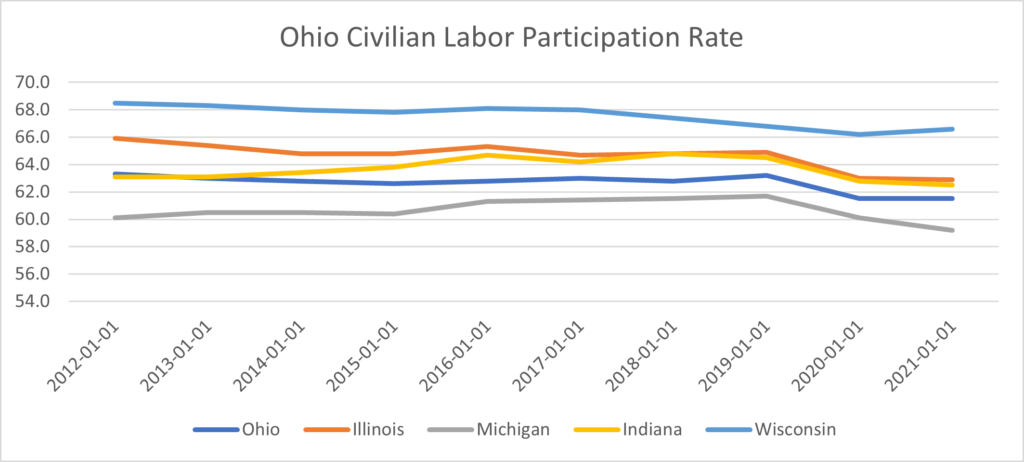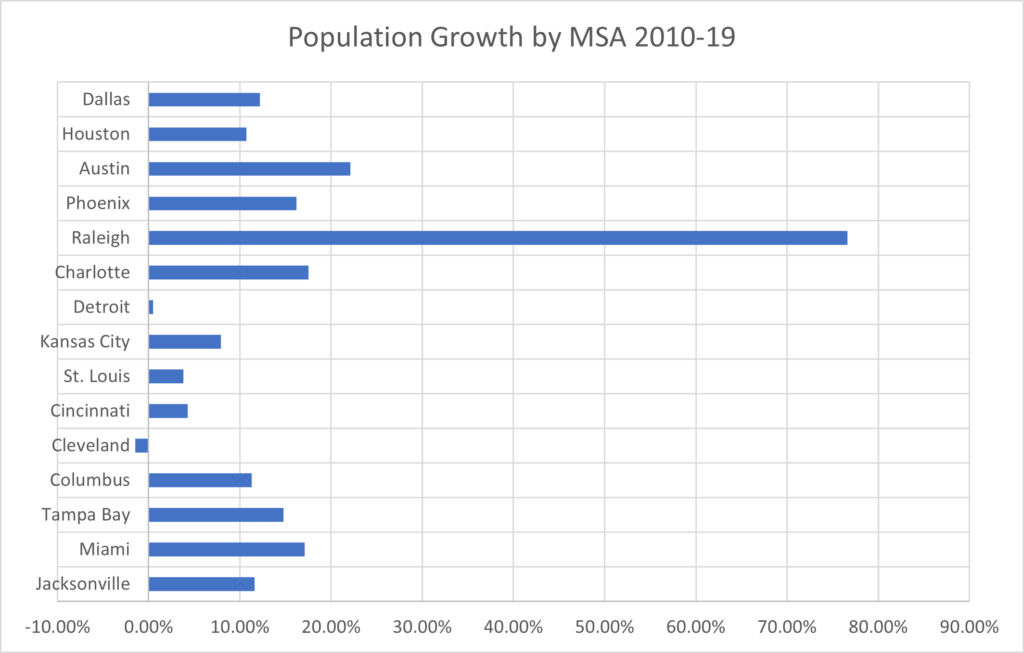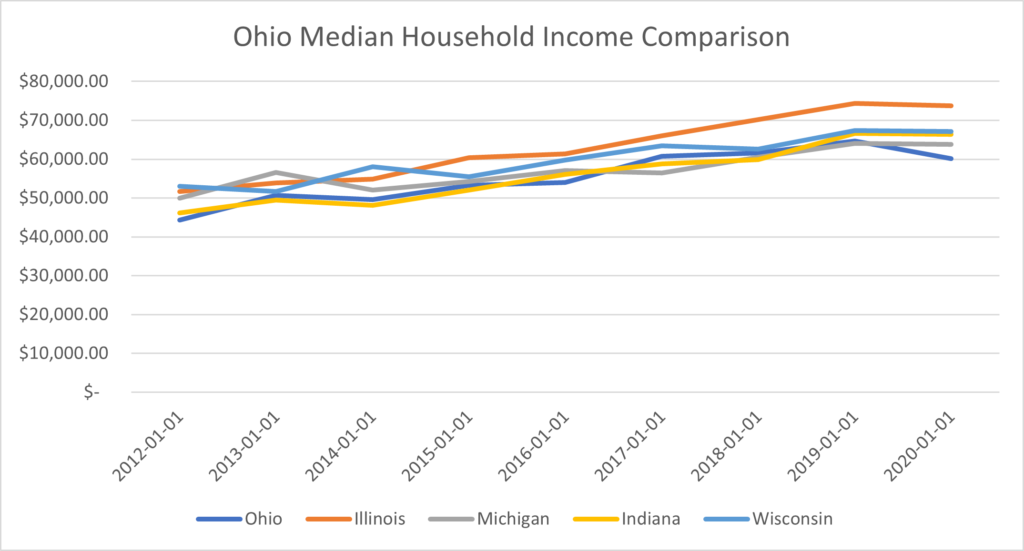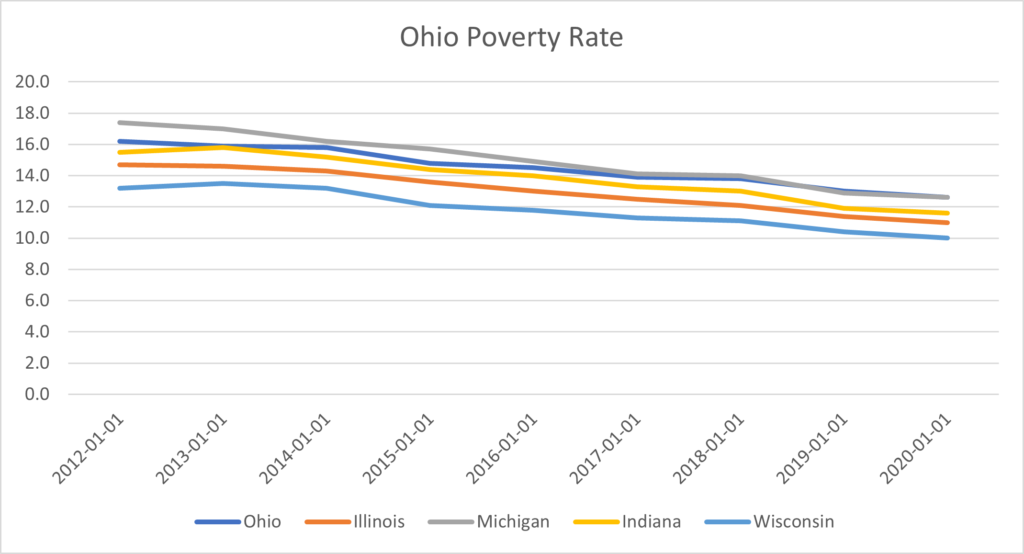Demographics—statistics about the population of region affect how important decisions are made. Companies research where to potentially grow their business will consider not just the economic growth of regions but the economic health of the region’s population.
Demographic measures of Ohio offer a mixed bag with low population growth being the largest negative of the Buckeye State. Ohio has a larger workforce than most of its Midwest competitors, the Buckeye state is lagging in getting its workforce-eligible population back into a job. Ohio’s civilian labor participation rate is below Illinois, Indiana, and Wisconsin but remains higher than Michigan.

Measuring the growth of Metropolitan Statistical Areas (MSAs) illustrates an even more important story for companies seeking an economic development incentive. Companies are generally not searching for a state but rather a market within a 45-minute drive time of a facility—that is where they will get workers and connect to a supply chain. A comparison of the major metro markets in Ohio, Michigan, Missouri, Florida, North Carolina, Arizona, and Texas illustrates again the strong market growth of the southern states compared to the Industrial Midwest. As the table below illustrates, Florida, North Carolina, Texas and Arizona’s metro centers are growing dramatically with Raleigh, North Carolina’s growth almost flowing off the chart. Florida’s population growth driven by its metropolitan centers is a critical factor in the state’s overall economic success and guarantees a bright future in the days to come.

Demographic measures such as household incomes illustrate the economic vitality of a region. Measures of median household income are one way to determine if a state or region’s economic stability. Ohio’s median household income is lagging Midwest competitors as well as illustrated by the chart below.

Federal government-established poverty rates illustrate how regions and states are impacting economic equity—are they providing an economic opportunity for everyone? As the table below illustrates, Ohio’s poverty rate has declined in line with Midwestern state competitors illustrating an overall improvement in this key economic equity measure.

Demographic measures are important for companies to understand when considering where to grow their business and maybe even more important for regions to consider when making critical public policy decisions impacting population and income growth. Ohio is unfortunately aligned with other Midwest Industrial states that face challenging demographic measures driven by low population growth.